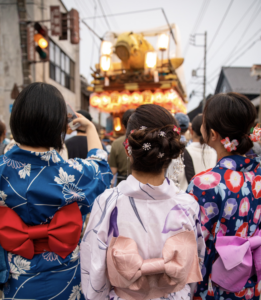Anúncios
The Hadaka Matsuri, or Naked Festival, held at the Konomiya Shrine in central Japan, has been a tradition for the past 1,250 years. This festival involves nearly-naked men chanting and fighting for the shrine while trying to chase away bad spirits before praying for happiness. However, this year marks a significant shift as women are participating for the first time in the festival’s long history.
The inclusion of women in the festival is a groundbreaking moment as Japan struggles with gender inequality, ranking 125th out of 146 countries on the World Economic Forum’s gender gap report. Despite facing criticism and concerns from some community members about women participating in a traditionally male-dominated event, the women who are part of this year’s festival see it as an opportunity to make history and challenge societal norms.
Atsuko Tamakoshi, whose family has been involved with the Konomiya Shrine for generations, acknowledges the hard work that women have always put in to support the festival behind the scenes. While some voices in the neighborhood were hesitant about women joining the festival, others, like Naruhito Tsunoda, emphasized the importance of everyone having fun during the event to make the gods happy.
Anúncios
The women participating in the festival are not nude like the men but are instead wearing traditional clothing such as happi coats and white shorts while carrying bamboo offerings. They do not take part in the rush to the shrine or the act of touching the shrine’s ‘male god’ as the men do. Despite these differences, the women feel a sense of responsibility and pride in being able to contribute to the festival.
The policy change to allow women to participate in the festival holds significant meaning for the women involved, as they are not only breaking gender boundaries but also carrying on a longstanding tradition. In a time when other festivals, such as the nude festival at Kokuseki Temple in northern Japan, are ending due to a lack of young participants, the inclusion of women in the Hadaka Matsuri signifies the festival’s ability to adapt and evolve.
Anúncios
As the women line up with bamboo sticks adorned with ribbons, they join in the men’s traditional chant of “Washoi Washoi,” marking a historic moment in the festival’s history. Despite the cold conditions and the intense physical demands of the festival, the women push through with determination, cheered on by the audience.
After their contribution is accepted at the shrine, the women bow and clap, expressing their gratitude for the opportunity to be part of the festival. The emotional moment culminates in tears, laughter, and hugs as the women celebrate their achievement with the support of the audience.
For participants like Mineko Akahori and Minako Ando, being part of the festival as women for the first time is a source of pride and accomplishment. The changing times and the inclusion of women in the festival signify a shift towards gender equality and the breaking of traditional barriers.
As the festival comes to a close, Atsuko Tamakoshi reflects on the experience, feeling grateful and happy to have been part of such a significant moment. The women’s participation in the Hadaka Matsuri represents a step forward in challenging gender norms and celebrating diversity and inclusion in Japanese culture.






